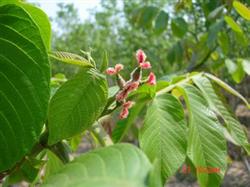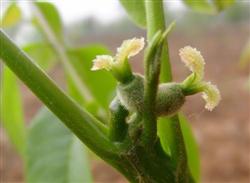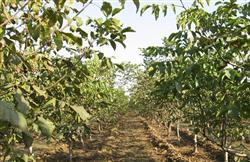Control of Carya cathayensis Flower Bud maggot

Carya cathayensis flower bud maggot is the main pest that harms the flower bud of Carya cathayensis. Because the insect is small and concealed, the occurrence period is short, and the harm is serious, once the effective control period is lost, the yield of Carya cathayensis will be seriously affected. In order to effectively guarantee the yield of hickory this year, scientists and technicians put forward some suggestions on how to carry out effective control: first, it is necessary to grasp the two effective control times for the growth of male flowers and the early formation of female buds to carry out crown spraying, and ground spraying can also be used to kill unfeathered pests in the ground. Second, it is necessary to select the right varieties of pesticides, and do not blindly increase the amount of medicine and the mixed use of many kinds of pesticides. 25% of the insecticides are sprayed on the ground, and the net of insects is 500 times. The spray on trees can be sprayed with 25% of Guangzhi EC and 600-800 times of poisonous silk EC. Pay attention to make the liquid penetrate into the flower buds during spray control. Third, the use of highly toxic and high residual pesticides such as omethoate and methamidophos is strictly prohibited to ensure the safety of people, food and the ecological environment.
- Prev

How to control Carya cathayensis flower bud maggot
Carya cathayensis flower bud maggot is the main pest that harms the flower bud of Carya cathayensis. Because the insect is small and concealed, the occurrence period is short, and the harm is serious, once the effective control period is lost, the yield of Carya cathayensis will be seriously affected. In order to effectively guarantee the output of pecans this year, scientific and technological personnel put forward on how to carry out effective prevention and control: first, we should pay attention to.
- Next

How to control Sclerotinia root rot of walnut seedlings?
Sclerotial root rot, also known as white silk disease, harms seedlings for one more year, making its main root and lateral root cortex rot, aboveground withered, or even all dead. 1. Symptoms of the disease: at high temperature and high humidity, white silky mycelia were produced on the base of seedling root neck and the surrounding soil and deciduous surface, followed by small sclerotia.
Related
- Moge, come on! The staff of the peasant association in the producing area of cantaloupe were frightened when the crowd gathered.
- Causes and Solutions of low Fruit setting rate of Apple
- Symptoms and control measures of passion fruit virus disease
- Fruit growing lesson: how do apple orchards keep high yields?
- Can you build orchards in the mountains? What are the pros and cons?
- How to manage the coloring period of Crisson grape?
- This paper introduces the processing technology of two kinds of fig products.
- How much is a month for retired teachers in rural areas by 2020?
- How can strawberry planting increase sugar content? We should pay attention to management in many aspects.
- What are the cultivation techniques on how to improve the yield of golden fruit?

